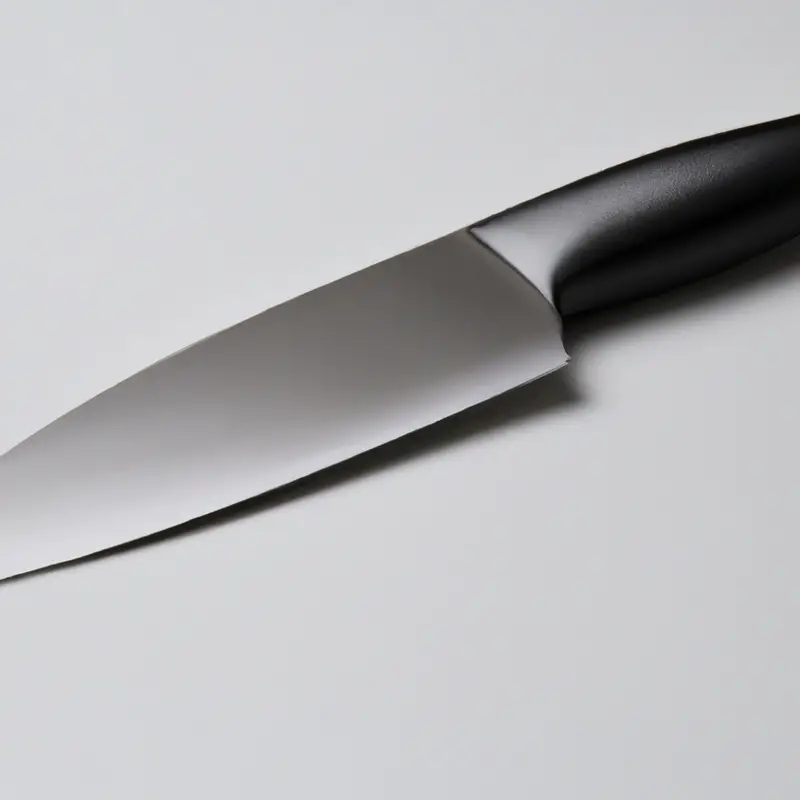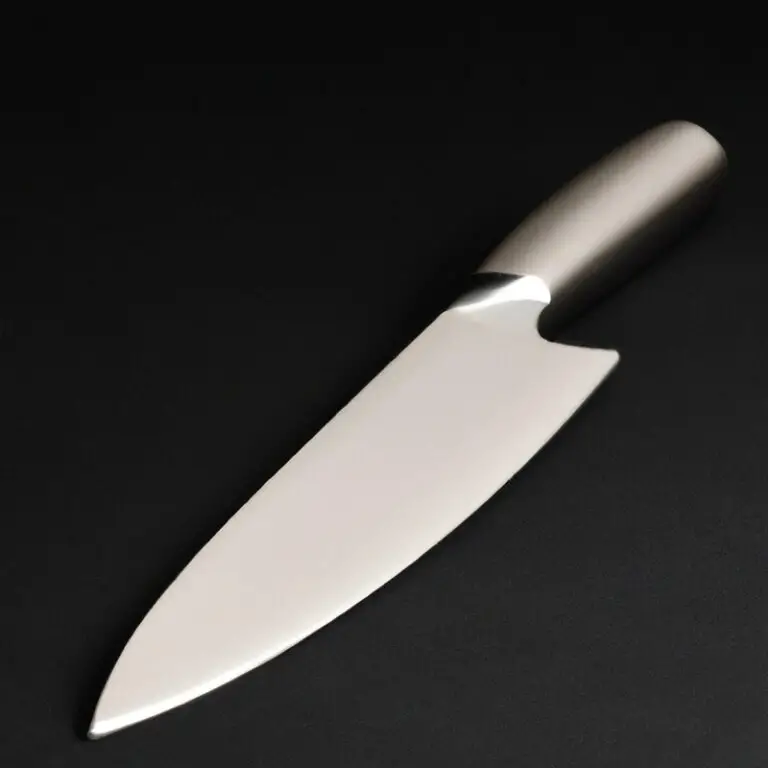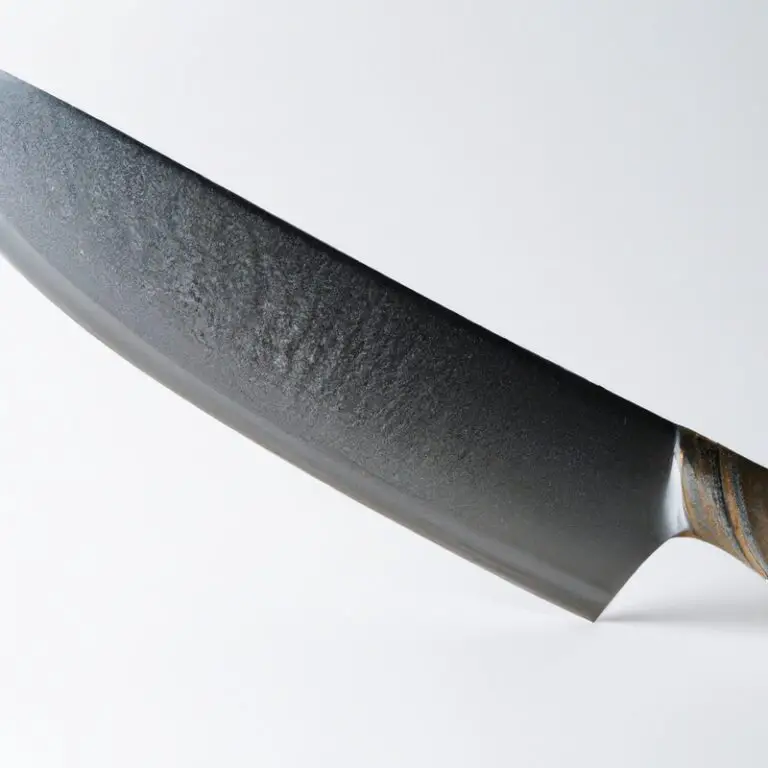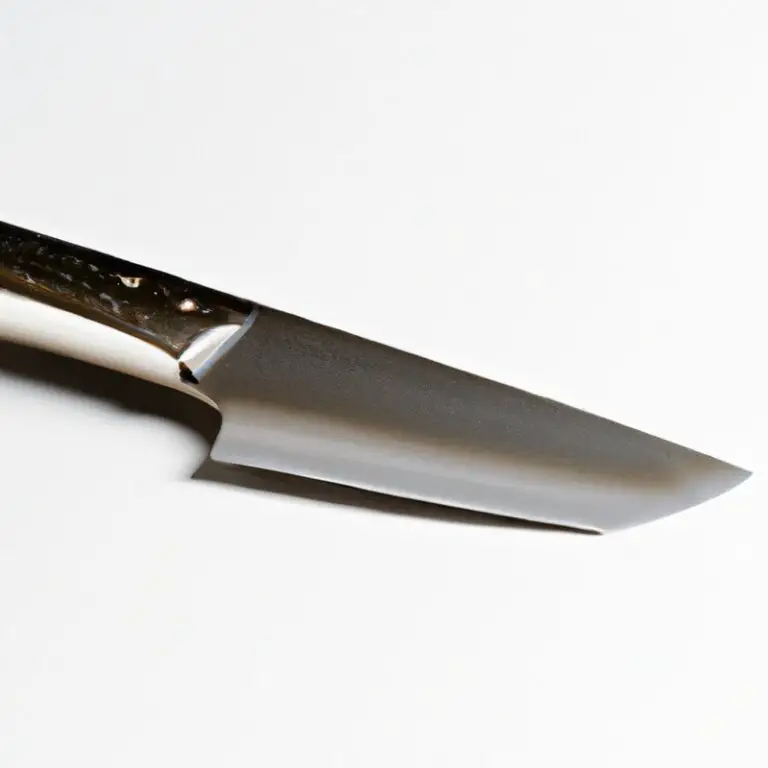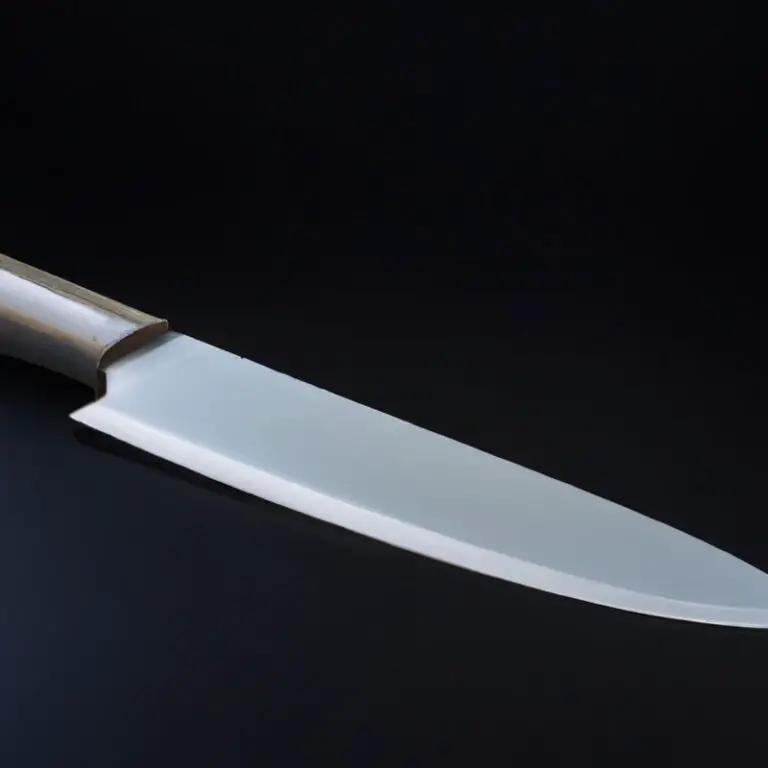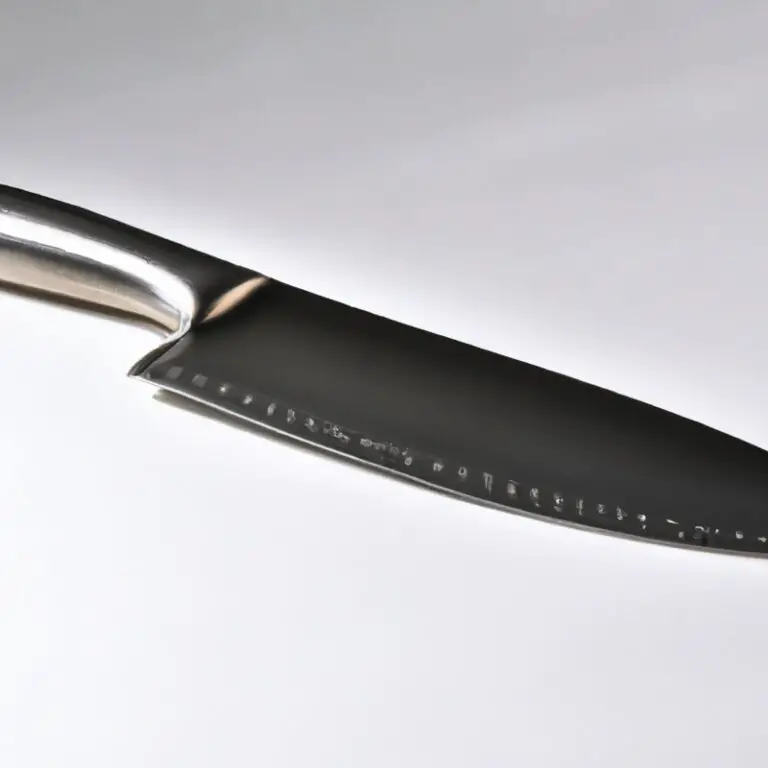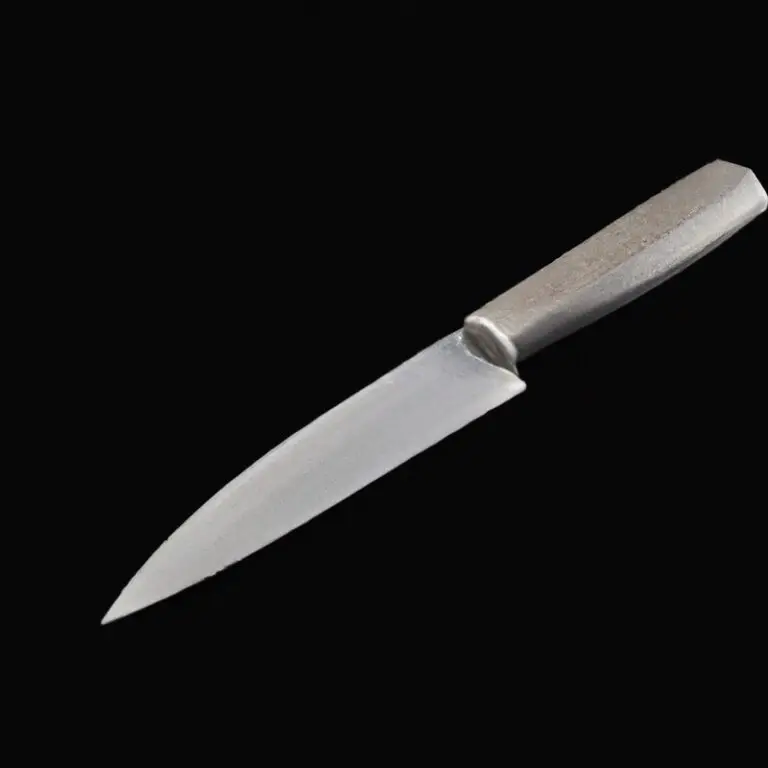Cleaning And Maintaining a Knife Sheath For Santoku Knives – Essential Tips
Key Takeaways:
- Proper cleaning and maintenance of a knife sheath is crucial for the longevity of your Santoku knife.
- Regular cleaning can prevent rust and other forms of corrosion, ensuring the blade remains sharp and functional for longer.
- Using the right cleaning materials, such as mild soap and warm water, can help to prevent damage to the sheath’s material.
- Storing your Santoku knife in a clean, dry sheath after use can protect the blade from scratches and other forms of damage.
Are you tired of dull Santoku knives and stained sheaths? Proper maintenance of a Santoku knife and its sheath is essential for preserving its quality and longevity.
In this blog post, we will discuss the importance of keeping your knife sheath clean and how to do so effectively.
We will also explore the materials of a Santoku knife sheath, different cleaning methods, and best practices for storage. Additionally, we will offer safety tips, common mistakes to avoid, and DIY cleaning solutions for a Santoku knife sheath.
Get ready to revive your Santoku knife and ensure it performs at its best!
| Step | Task |
|---|---|
| 1 | Remove the knife from the sheath |
| 2 | Brush off any dirt and debris from the sheath with a soft-bristled brush |
| 3 | Wipe down the sheath with a damp cloth |
| 4 | Dry the sheath with a clean cloth |
| 5 | Apply a leather conditioner to the sheath to keep it supple and prevent cracking |
| 6 | Store the sheath in a cool, dry place away from direct sunlight |
Why a clean knife sheath is important for Santoku knives
A clean knife sheath is essential for Santoku knives to maintain their sharpness and prevent rust and corrosion. Dust, debris, and food particles can accumulate in the sheath, which can cause damage to the knife blade.
Additionally, a dirty sheath can also be a breeding ground for bacteria, which can contaminate the knife and put the user at risk of foodborne illness.
Keeping the Santoku knife sheath clean can also help to prolong the lifespan of the knife and ensure safe food preparation.
Understanding the materials of a Santoku knife sheath
A Santoku knife sheath can be made of various materials including leather, plastic, or wood. Leather sheaths come in different types of leather, such as cowhide, buffalo, or sheepskin, and require conditioning to maintain their texture and color.
Plastic sheaths are durable and easy to clean, but must be kept away from direct sunlight to avoid warping.
Wooden sheaths are often made of hardwood, and it is important to keep them dry to prevent mold growth and rotting. Some Santoku knife sheaths are also lined with felt or velvet to protect the blade during storage.
It is crucial to understand the material of your Santoku knife sheath to determine the appropriate cleaning and maintenance methods required to ensure its longevity.
Different methods for cleaning a Santoku knife sheath
Different methods for cleaning a Santoku knife sheath include using mild soap and warm water solution to wipe the surface of the sheath with a cloth or a soft brush. Another method is to use vinegar solution, which can be an effective cleaner for removing tough stains or residues.
Additionally, baking soda and water paste can be applied to the sheath and then scrubbed with a brush before rinsing off with warm water.
For a deeper clean, rubbing alcohol can be applied by saturating a cloth and then wiping the surface of the sheath. Lastly, an all-purpose cleaner can also be used to clean the sheath surface, but make sure to check the label for compatibility with the sheath materials before use.
Always dry the sheath thoroughly after cleaning to prevent moisture buildup that may lead to mold growth.
How to remove tough stains or residue from a Santoku knife sheath
To remove tough stains or residue from a Santoku knife sheath, mix a solution of warm water and dish soap in a bowl. Dip a soft cloth into the mixture and gently rub the affected area in a circular motion.
For tougher stains, you can use a baking soda paste with a toothbrush to scrub the area.
Rinse with warm water and dry the sheath completely with a towel or let it air dry overnight. Avoid using harsh chemicals or abrasive materials that could damage the sheath’s surface.
Best practices for storing a Santoku knife with its sheath
Best Practices for storing a Santoku knife with its sheath:
- Always store your Santoku knife in the sheath provided with it. This will protect the blade from any scratches or damage and keep it from getting dull.
- Ensure that the blade is clean and dry before placing it in the sheath. Any moisture left on the blade can cause rust and corrosion to form over time.
- Store the knife in a safe, dry place, away from any heat or moisture. A knife block or a drawer is an ideal option for storage.
- Avoid keeping the knife with other utensils or in a crowded environment, as this can increase the risk of damage or injury.
- If you need to transport your Santoku knife, ensure that the sheath is secure and the blade is covered. This will prevent any accidental injuries or damage to the blade.
By following these best practices, you can ensure that your Santoku knife stays in good condition and lasts for years to come.
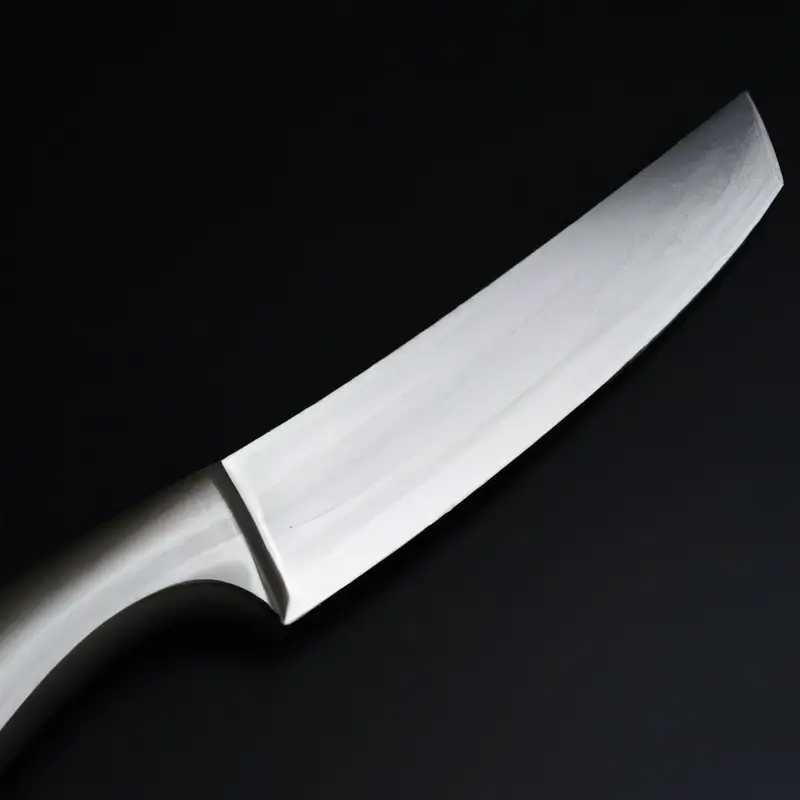
The benefits of proper maintenance to prolong the life of a Santoku knife sheath
Proper maintenance of a Santoku knife sheath has several benefits that can help prolong its life. By regularly cleaning and maintaining the sheath, you can prevent the accumulation of dirt, dust, and moisture, which can damage the sheath over time.
Additionally, cleaning and maintaining the sheath can also ensure that it remains in good condition and preserves its aesthetic appeal.
Regular maintenance can also help prevent the sheath from developing rips or tears, which can render it unusable. Furthermore, properly maintaining the sheath can also ensure that the blade of the Santoku knife remains sharp.
A damaged or dirty sheath can cause scratches or nicks on the edges of the knife, which can cause it to eventually dull over time.
Maintaining a Santoku knife sheath helps prolong the life of the sheath itself, preserves the aesthetic appeal of the sheath and knife, and ensures that the blade of the knife remains sharp.
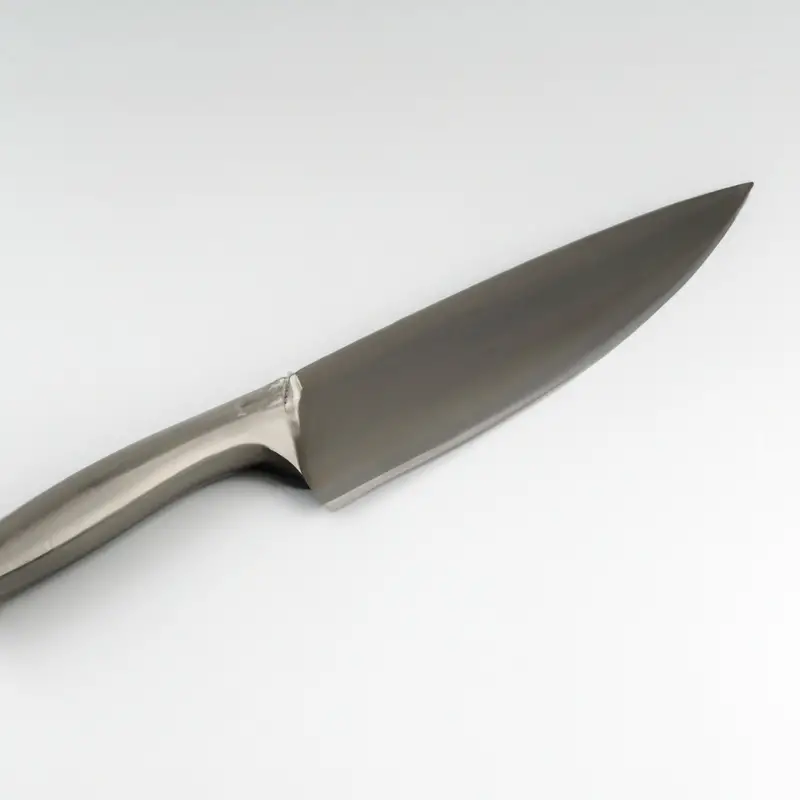
Safety tips when cleaning a Santoku knife sheath
When it comes to cleaning a Santoku knife sheath, safety is a top priority. Here are some important safety tips to keep in mind:
- Wear protective gloves to prevent any cuts or injuries while cleaning the sheath.
- Avoid using harsh chemicals or abrasive materials that can damage or scratch the surfaces of the sheath.
- Use a soft cloth or sponge to gently wipe the sheath clean and dry it thoroughly to prevent any moisture buildup.
- Always keep the knife pointed away from your body while cleaning the sheath to avoid any accidental cuts.
- Do not submerge the sheath in water or put it in a dishwasher as it can cause irreparable damage to the materials or the knife itself.
By following these safety tips, you’ll be able to clean your Santoku knife sheath without any incidents. Remember, safety is key when it comes to handling sharp objects, and taking extra precautions can go a long way in preventing any mishaps.
Common mistakes to avoid when cleaning a Santoku knife sheath
There are a few common mistakes that you should avoid when cleaning a Santoku knife sheath to ensure its longevity and efficiency. Firstly, avoid using harsh chemicals or abrasive cleaning tools when cleaning the sheath.
This can damage the protective coating or scratch the surface of the sheath.
Another mistake to avoid is exposing the sheath to excessive heat or prolonged exposure to sunlight. This can cause the sheath to warp or crack over time, compromising its ability to protect the knife blade.
Additionally, it’s important not to leave any residue or moisture on the sheath after cleaning.
This can lead to the growth of mold or bacteria, which can damage the material and negatively impact the knife’s cleanliness. Finally, avoid using the sheath immediately after cleaning.
Allow it to dry completely before inserting the knife to prevent any moisture from transferring onto the blade.
By avoiding these common mistakes, you can ensure that your Santoku knife sheath remains in good condition and provides optimal protection and functionality for your knife.
How often should you clean and maintain your Santoku knife sheath
It is recommended to clean and maintain your Santoku knife sheath after each use to prevent dirt, moisture, and bacteria from building up. Use a damp cloth to wipe away any debris, and allow it to air dry before storing the knife in the sheath.
If there are any tough stains or residues, use a mixture of mild soap and warm water to gently scrub the area.
As for maintenance, inspect the sheath regularly for any signs of damage or wear, and replace it if necessary to ensure the safety of the knife user. Proper cleaning and maintenance of a Santoku knife sheath can prolong its lifespan and keep the knife in good condition for longer.
DIY cleaning solutions for a Santoku knife sheath
When it comes to cleaning a Santoku knife sheath, there are various DIY cleaning solutions available. Here are some simple and effective ways to clean a Santoku knife sheath:
- Mild dish soap: Use a mild dish soap and warm water to clean the inside and outside of the sheath. Rinse thoroughly and dry with a clean cloth.
- Baking soda paste: Mix baking soda and water to make a paste. Apply the paste to the sheath and use a soft-bristled brush to scrub away stains and odor. Rinse thoroughly and dry with a clean cloth.
- White vinegar solution: Mix equal parts white vinegar and warm water. Dip a soft cloth in the solution and wipe the inside and outside of the sheath. Rinse thoroughly and dry with a clean cloth.
- Lemon juice: Cut a lemon in half and rub the cut side on the inside and outside of the sheath. The acid in the lemon juice helps to remove stains and odor. Rinse thoroughly and dry with a clean cloth.
Remember to avoid using abrasive cleaners or steel wool pads as they can scratch the sheath’s surface. Also, let the sheath air dry completely before storing the knife inside.
With these simple DIY cleaning solutions, you can keep your Santoku knife sheath clean and well-maintained for years to come.
Final Verdict
In summary, cleaning and maintaining a knife sheath for Santoku knives is an essential and often overlooked aspect of owning this versatile and high-quality kitchen tool. Understanding the materials and various cleaning methods is crucial for keeping your Santoku knife sheath in top condition.
By following the best practices outlined in this article and avoiding common mistakes, you can prolong the life of your sheath and ensure the safe storage of your knife.
Regular maintenance not only protects your investment but also enhances your cooking experience. Remember, your Santoku knife is only as good as the care you give it.
By taking the time to clean and maintain your sheath, you can make sure your Santoku knife is serving you well for years to come.

